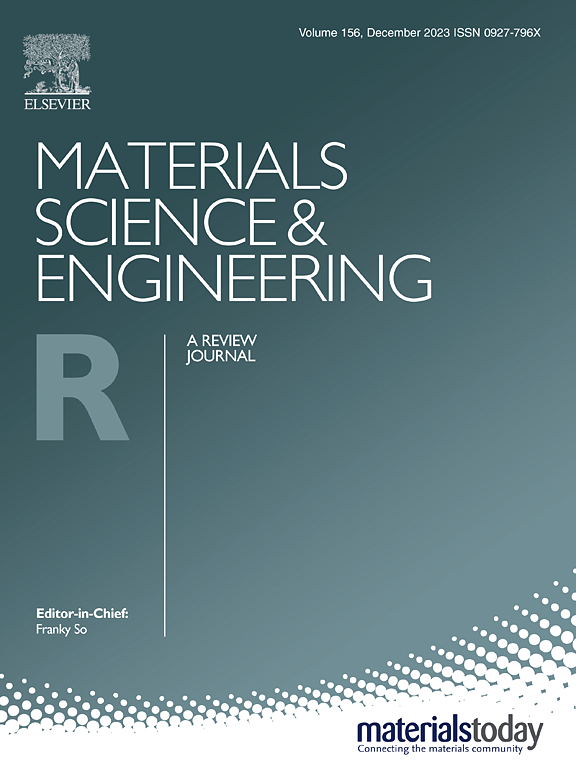Photoelectric dual mode sensing system based on one-step fabricated heterojunction artificial synapses device
IF 31.6
1区 材料科学
Q1 MATERIALS SCIENCE, MULTIDISCIPLINARY
引用次数: 0
Abstract
With the growing demand for intelligent perception systems in the IoT and big data era, multimodal sensing technologies face challenges including complex device architectures and low energy efficiency. This study proposes a TiO2-Nb: SrTiO3 heterojunction-based optoelectronic artificial synaptic device fabricated via one-step magnetron sputtering, enabling monolithic integration of sensing-memory-processing functionalities. Experimental results demonstrate that the device exhibits multilevel resistive state stability exceeding 10,000 seconds under electrical stimulation and achieves over seven non-volatile conductance states through optical modulation. A sensor-memristor fusion architecture with optoelectronic cooperative regulation was developed for intelligent transportation and emotion recognition applications. The system successfully realizes multidimensional vehicle monitoring (dynamic/speed/direction) and accomplishes three-category emotion classification by integrating facial features and acoustic signals, validating the effectiveness of multimodal information fusion. The device achieves audiovisual bimodal fusion perception through optoelectronic synergy, featuring CMOS-compatible fabrication that offers a scalable pathway for neuromorphic sensing systems. This work breaks the von Neumann energy-efficiency bottleneck via device-architecture co-innovation, providing a low-power solution for edge computing scenarios in smart transportation and human-machine interaction.
基于一步制异质结人工突触装置的光电双模传感系统
随着物联网和大数据时代对智能感知系统需求的不断增长,多模态传感技术面临着设备架构复杂、能效低等挑战。本研究提出了一种基于TiO2-Nb: SrTiO3异质结的光电人工突触器件,通过一步磁控溅射制造,实现了传感-记忆-处理功能的单片集成。实验结果表明,该器件在电刺激下表现出超过10,000 秒的多电平电阻态稳定性,并通过光调制实现了7种以上的非易失性电导态。针对智能交通和情感识别应用,提出了一种光电协同调节的传感器-忆阻融合体系结构。该系统成功实现了多维车辆监控(动态/速度/方向),并通过融合人脸特征和声音信号实现了三类情绪分类,验证了多模态信息融合的有效性。该器件通过光电协同实现视听双峰融合感知,具有cmos兼容的制造,为神经形态传感系统提供了可扩展的途径。这项工作通过设备架构协同创新打破了冯·诺伊曼能效瓶颈,为智能交通和人机交互中的边缘计算场景提供了低功耗解决方案。
本文章由计算机程序翻译,如有差异,请以英文原文为准。
求助全文
约1分钟内获得全文
求助全文
来源期刊

Materials Science and Engineering: R: Reports
工程技术-材料科学:综合
CiteScore
60.50
自引率
0.30%
发文量
19
审稿时长
34 days
期刊介绍:
Materials Science & Engineering R: Reports is a journal that covers a wide range of topics in the field of materials science and engineering. It publishes both experimental and theoretical research papers, providing background information and critical assessments on various topics. The journal aims to publish high-quality and novel research papers and reviews.
The subject areas covered by the journal include Materials Science (General), Electronic Materials, Optical Materials, and Magnetic Materials. In addition to regular issues, the journal also publishes special issues on key themes in the field of materials science, including Energy Materials, Materials for Health, Materials Discovery, Innovation for High Value Manufacturing, and Sustainable Materials development.
 求助内容:
求助内容: 应助结果提醒方式:
应助结果提醒方式:


